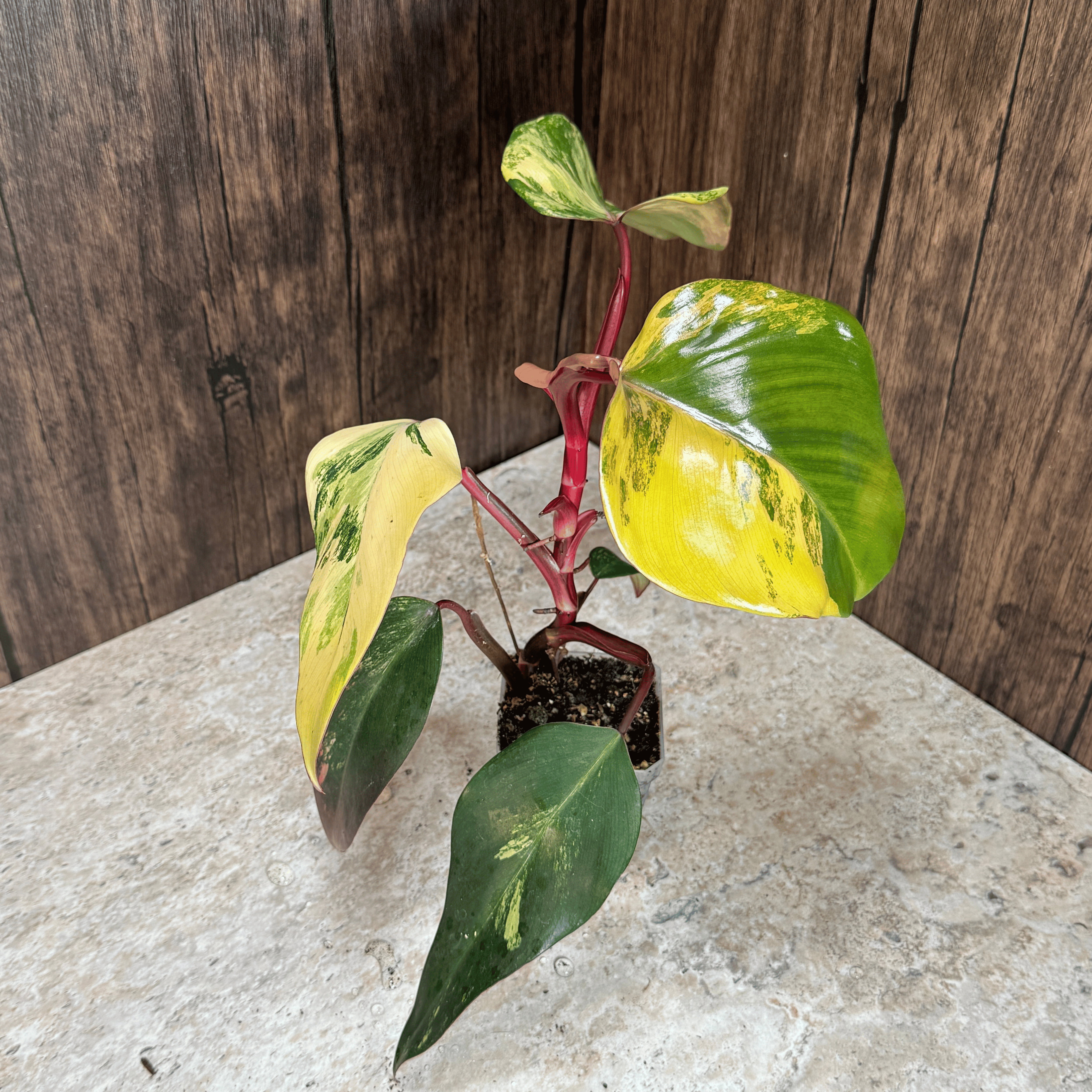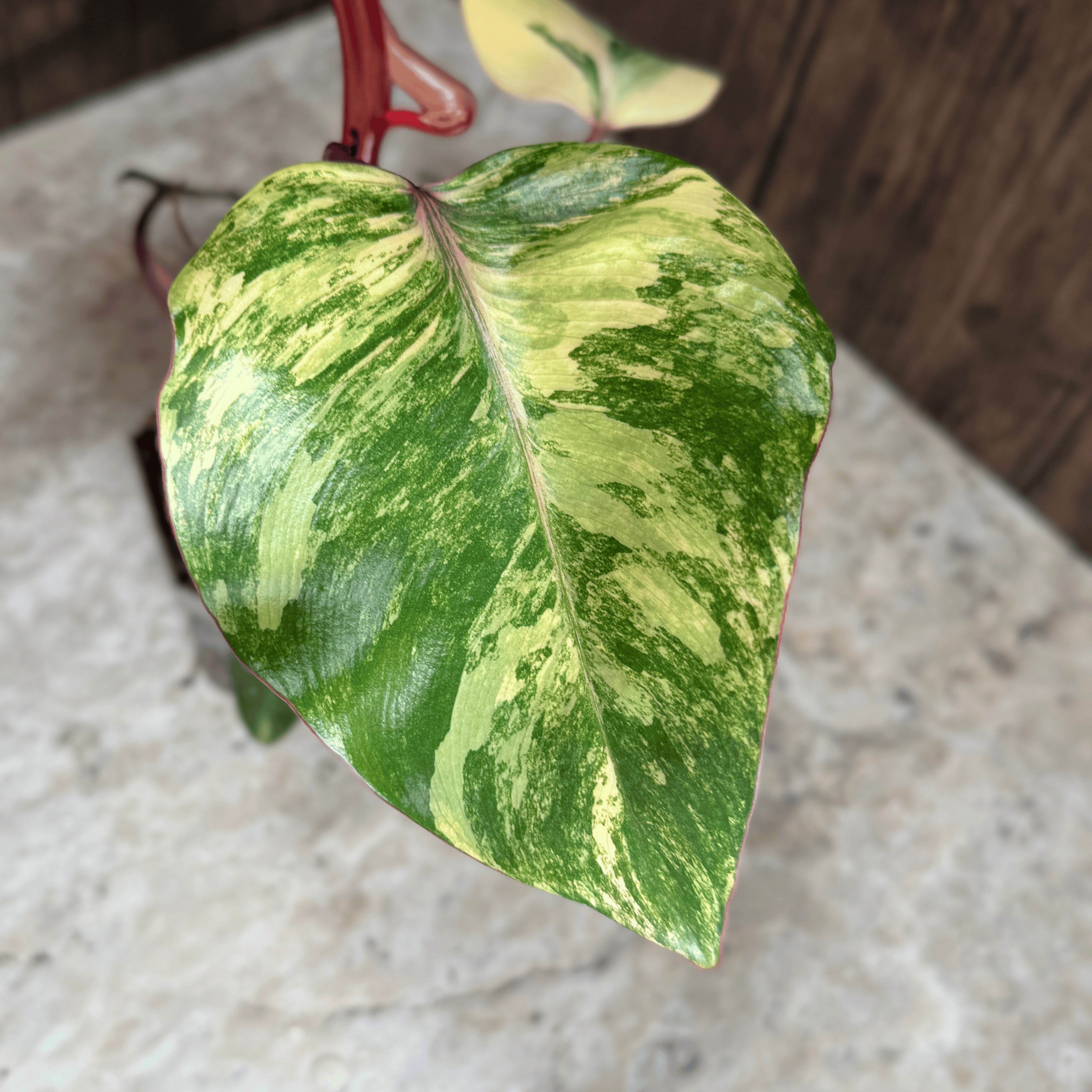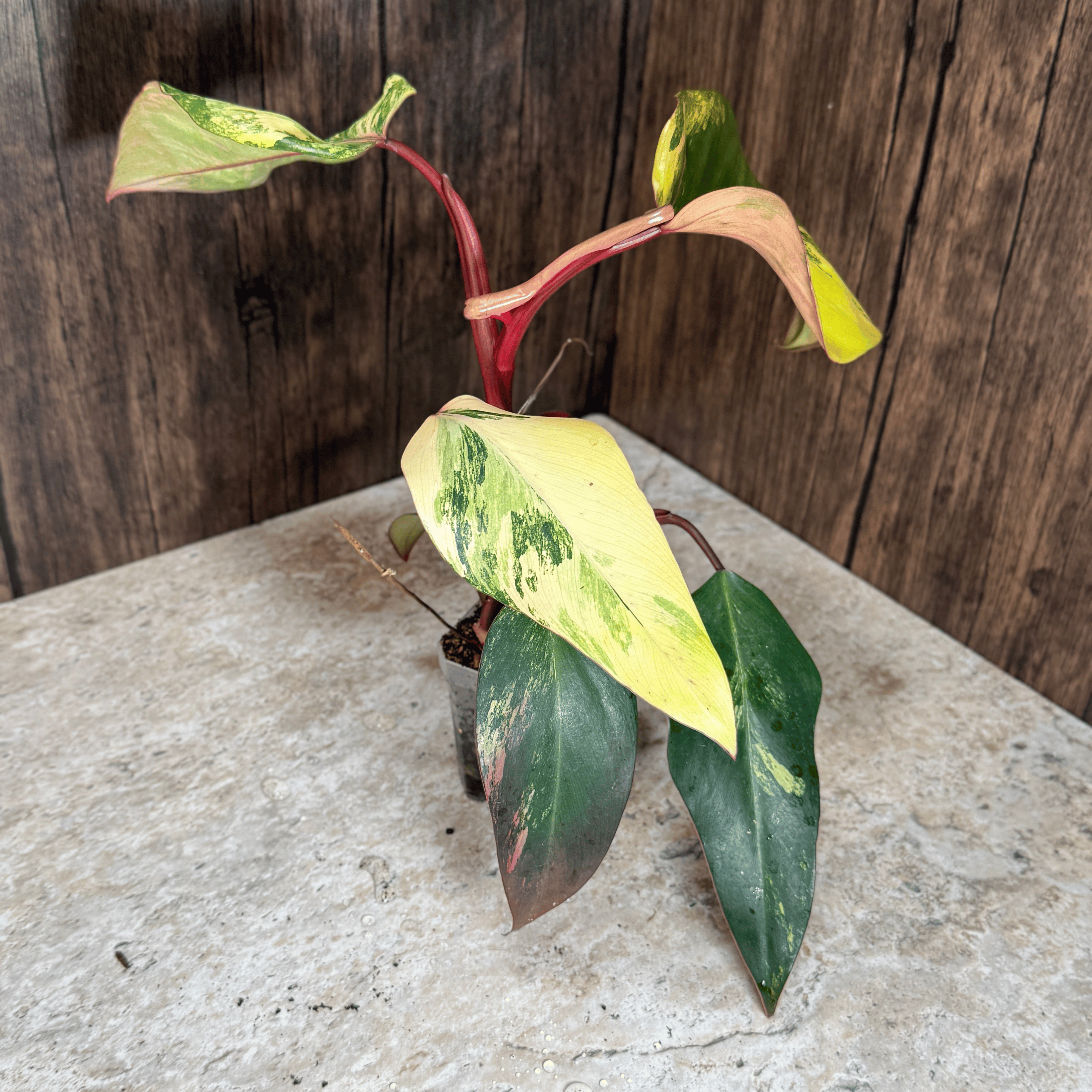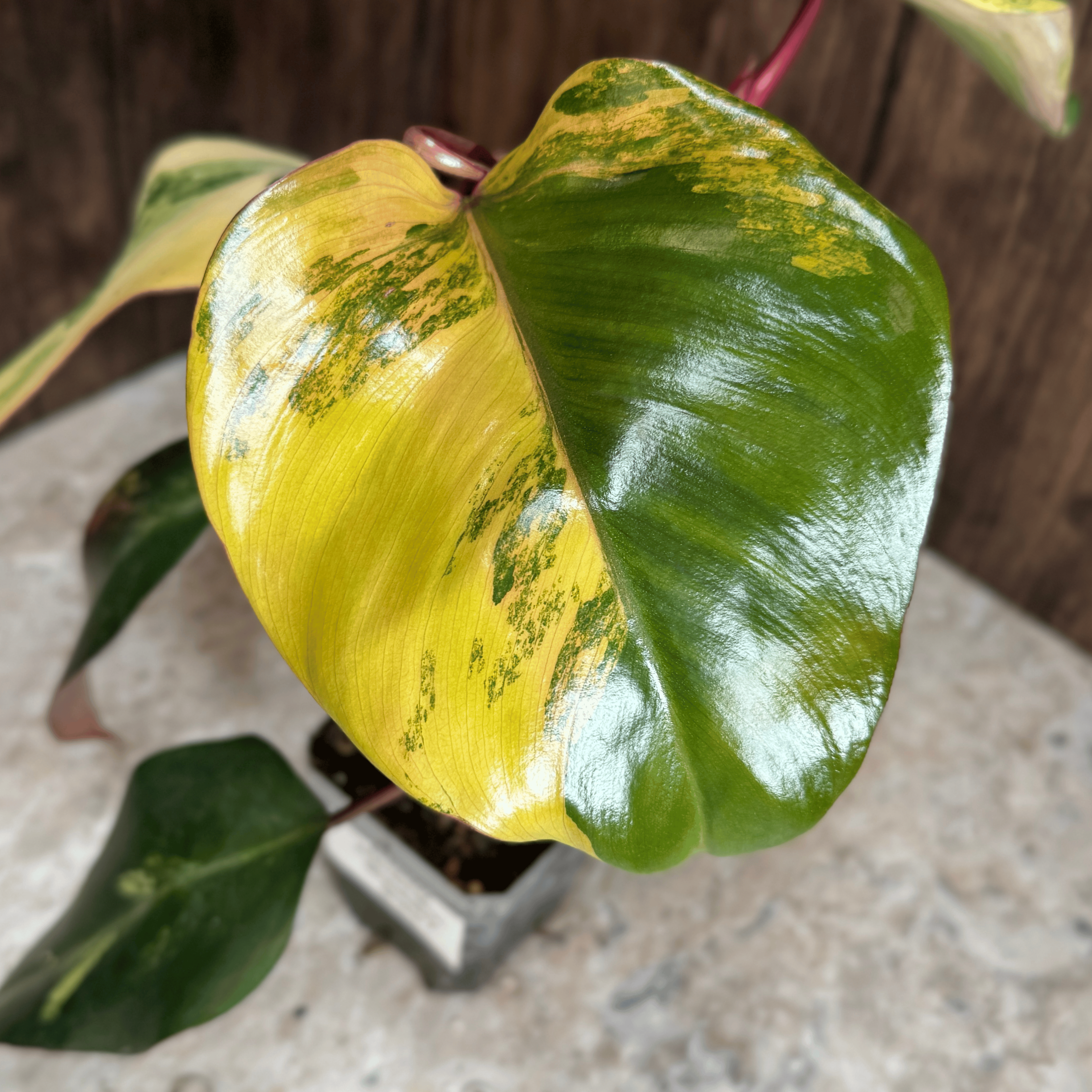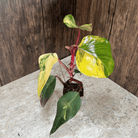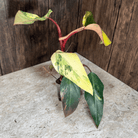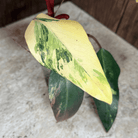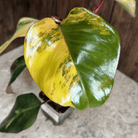Yes, the variegation is real. And no, you don’t have to guess what you’re getting—unless you want to.
Philodendron ‘Strawberry Shake’ is a variegated sport of Philodendron erubescens ‘Red Emerald’, a fast-growing climbing species native to Colombia. The ‘Shake’ mutation expresses unstable but often spectacular sectoral and marbled variegation in hues of cream, blush, peach, and—on a good day—fiery sunset orange. The coloration is caused by chimeric cell layers in the meristem that divide unevenly, resulting in striking, unpredictable patterns from leaf to leaf.
This offering comes in two formats:
-
Exact Plant — You’ll receive the specific plant shown in the photos, already rooted in aroid potting mix.
-
Grower’s Choice — A rooted plant selected by the grower from the same genetic line.
Philodendron ‘Strawberry Shake’ grows as a climber and will produce increasingly large leaves if given vertical support. As with most chimeric variegates, light matters—too much, and you risk burning; too little, and the color fades. It’s a balancing act, but one worth dialing in.
Shipping Note: All plants ship fully rooted in aroid mix and are carefully packaged for transit. During shipping, it’s normal for some soil to shift in the pot or for leaves to experience cosmetic damage such as minor tearing, bruising, or yellowing due to pressure, temperature changes, or time in darkness. These issues do not impact the health of the plant and are not considered damage or defect. We package with the goal of minimizing transit stress, but cosmetic imperfections may still occur and do not qualify for replacement or refund.
Philodendron ‘Strawberry Shake’ Care Overview
| Requirement | Details |
|---|---|
| Light | Bright, indirect light. Too little light reduces variegation; too much can burn pale areas. |
| Humidity | 50–70% preferred, but adaptable. Higher humidity supports larger leaf development. |
| Watering | Allow the top 1–2” of substrate to dry before watering. Avoid waterlogging. |
| Substrate | Well-draining aroid mix (e.g., peat, perlite, orchid bark, pumice). |
| Temperature | 65–85°F. Keep above 60°F for optimal growth. |
| Feeding | Fertilize every 3–4 weeks during active growth. Use a balanced or nitrogen-lean formula to avoid reverting. |
| Growth Habit | Climber. Will produce larger leaves and stronger variegation with vertical support. |
| Pests to Watch | Aphids, thrips, and mealybugs. Regular inspections recommended. |
Our Live Delivery Guarantee
We stand behind every leaf and every mite. If your plant or predatory insects don’t arrive alive on the first delivery attempt, we’ll make it right.
Here’s what you need to know:
- Email us at info@fgmnnursery.com within 24 hours of delivery
- Include clear photos of the item and the shipping label
- Someone must be available to receive the package—plants and bugs don’t do well sitting in the sun, a mailbox, or the back of a delivery truck
For plants, we offer store credit if something goes wrong.
For predatory mites and beneficial insects, you’ll have the choice of a replacement shipment or store credit.
If you contact us after the 24-hour window, we may still be able to help—just know it’s handled case by case.
We pack with care, insulate when needed, and check the weather before shipping. But once it’s in transit, the fastest way to protect your order is to open it right away.

